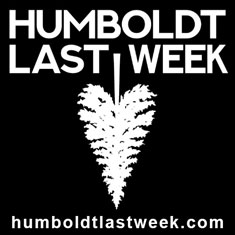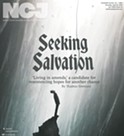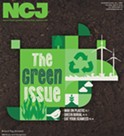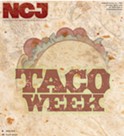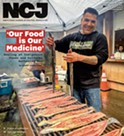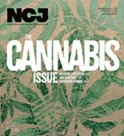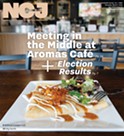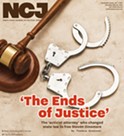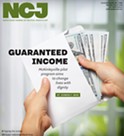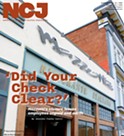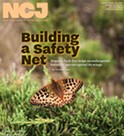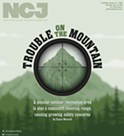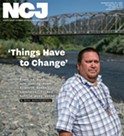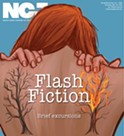Welcome to Pot City!
To save the Humboldt County economy from legalization, we have to become the Napa Valley of weed. Here's how.
By Kym Kemp[
{
"name": "Top Stories Video Pair",
"insertPoint": "7",
"component": "17087298",
"parentWrapperClass": "fdn-ads-inline-content-block",
"requiredCountToDisplay": "1"
}
]
If you grew up in the Emerald Triangle, marijuana permeates the fabric of your life in ways people from outside the area cannot imagine. It threads throughout much of the social and political aspects of the Humboldt world. But it is with money, money, money that this intertwining is most apparent -- and this financial aspect subtly weaves through even in the most conservative household on the North Coast.
Any business here in Humboldt relies in part on money from the marijuana industry. There isn't a trade or company that doesn't receive a goodly portion of its monthly income either directly or indirectly from cannabis. Even churches receive tithes from people whose jobs wouldn't exist if marijuana money didn't support the framework of the North Coast economy.
Today, an enormous tsunami is poised to drown the economics of this area. If -- and, with an assembly bill and a ballot initiative to legalize marijuana pending, a better word is "when" -- marijuana is legalized, corporations could wrench control of cannabis production from locals and prices could fall. The result for Humboldt could be the failure of many of the small businesses that rely on marijuana money. First, the obvious ones like horticulture companies and head shops will go under. But then the wave will begin to destroy grocery stores and insurance brokers, doctors and dentists, volunteer fire departments and hospices -- for these are indirectly subsidized by the massive influx of marijuana income to the area. Yes, even churches and nursery schools will feel the tidal wave pulling them under. As each business collapses, its employees will quit supporting another level of stores and tradespeople. Then, in turn, those businesses will crumple and pull down another level of commerce.
Anna Hamilton, founder of the Southern Humboldt-based What's After Pot (WAP), says when she talks about the consequences of legalization the "most concerned ... are business people who have already seen the ball drop ... These people are pragmatic ... They know what is happening and they are scared to death!"
Does it have to be this way? Or are there methods for Humboldt to prepare for a future without wallets full of illegal cash?
One possibility would be to become the destination of choice for the marijuana tourist. Are there such creatures? And, more importantly, are they worth wooing?
^^^^^
In fact, there are already successful venues for marijuana tourism -- think Amsterdam and Jamaica. Right now, Denver is positioning itself to rake in large piles of legal money from the cannabis consumer. Eric Sligh, editor of Humboldt Grow Magazine, describes how during a recent visit to Colorado he saw "streets full of well dressed 25- to 30-year-olds trying to pitch their marijuana related products. [It is] like Mad Men -- everyone has their eyes on the prize ... It feels like the gold rush but much more corporate. [There are] lawyers and medical marijuana consultants ... The dispensaries have a nice-coffee-shop-in-Venice feel." (Disclosure: I also write for Grow.)
Sligh thinks that in spite of the fact that Humboldt itself is a marijuana mecca, "[Denver] is going to put us out of business. The state over there is facilitating the whole process." This difference between California's and Colorado's marijuana climate is best seen in an article by the Marijuana Policy Project, which quotes Los Angeles County District Attorney Steve Cooley as saying that all collectives are illegal and "are going to be prosecuted." Meanwhile, Cooley's counterpart, Boulder County District Attorney Stan Garnett, recently explained that in regards to medical marijuana, he was the "most progressive of any DA in Colorado" and indicated that he's willing to consider full marijuana legalization. Earlier this month, a bi-partisan group of lawmakers in the Rocky Mountain state sent an e-mail to Attorney General Eric Holder asking him to "consider imposing a moratorium on medical marijuana sector raids." They added, "[W]e believe it is a mistake to put the activities of the legitimate medical marijuana community in the same category as ... criminal conglomerates." These dissimilar attitudes can create communities that will either surf the coming changes or drown beneath them.
Humboldt does have brand name recognition, but we don't have obvious support from county officials for the cannabis vacationer. Can we as a county do more to bring marijuana tourists to our area? Do we want them? If we do, how do we attract them?
Marijuana tourism is hard to quantify. People are unlikely to admit that they come here to experience an illegal culture or consume an illegal product. Nonetheless, indications that the marijuana tourist is a regular customer in Humboldt can be found. Quick perusals of marijuana Web sites and chat rooms show frequent referrals to Humboldt and Mendocino vacations. Several large events in the area seem likely to appeal to the cannabis visitor -- Reggae on the River and Reggae Rising being prime examples. The money from these festivals brings much-needed cash to the area. In addition, anecdotal evidence suggests entrepreneurs move here to be part of the marijuana culture and start up small businesses. But we could do more to support the toke-and-travel tourist and these small business people.
"Any targeted tourism market depends on the local business suppliers to turn an idea or a resource into a product," says Tony Smithers, executive director of the Humboldt County Convention & Visitors Bureau. "We would need ... [an] MJ museum, hands-on growing experiences, pot bars, special events, etc. before there would be anything to market. Having said that, if these services do develop then I fully intend to market them ... I will lobby vigorously to serve this market. Marketing is about giving the customer what he wants, and the market will decide whether this form of tourism will thrive. Amsterdam seems to do okay." Though Smithers makes it clear that these opinions are his own and are "not reflected by the bureau and the board or the clients, etc.," he is not alone in thinking that Humboldt could tap into a lucrative market if it had the right kind of draws to bring in the right kind of tourist.
Some people worry that the marijuana tourist will be a panhandling transient more likely to suck services from the county than to drop money in local businesses. Smithers disagrees. "The people who come are those you market to," he says. "Do you advertise in High Times or in Sunset? Target people with fat wallets."
Smithers points out that the Baby Boomers are a large part of society -- a "bulge in the snake." "Many of them are now retiring and 'reinventing themselves' -- recapturing their youth, which could include recapturing the '60s," he says. An ad campaign tied to evoking the Flower Power movement, perhaps with a tie-dye theme and focusing on the current trend for authentic (not Disney) vacations could bring older, well-heeled tourists with an appreciation not only for the Humboldt weed but for the Redwoods, the beautiful coastline and the delicious local foods.
Furthermore, he points out these Baby Boomers are older and facing medical issues that they may choose to treat with marijuana. In fact, the latest research is showing that Boomers are increasingly using cannabis for both recreation and medical reasons. According to surveys by the Substance Abuse and Mental Health Services Administration, among 55-59 year olds the use of marijuana has tripled since 2002. These older, prosperous tourists with an appreciation for all the products Humboldt has to offer seem like good targets for Humboldt County to try to attract. If we want them and other well-to-do cannabis aficionados, then, what are some of the things we need to do now to maximize our tourism potential?
^^^^^
Here are a few suggestions:
1). We should embrace our status as one of the premier cannabis areas in the world. Whenever people hear the word "Humboldt," the first thought on their mind is potent, green buds. Trying to rebrand us -- ignoring the name recognition we already have -- is like Hollywood wanting to be known as the palm tree capital. Why ignore what we are already famous for in favor of what few people recognize? That doesn't mean disregard other good commodities like grass fed beef and beautiful coastlines, but these should be packaged with our marijuana status, not instead of it.
2). We should look into branding weed (215 dispensaries have a quasi-legal status) in a similar fashion to the Champagne region in France -- only weed grown in Humboldt could carry the Humboldt name. In other words, we need to start working now to stop corporate America from co-opting our name. We need to preempt R.J. Reynolds Co. and its ilk from putting out packs of substandard pot labeled Humboldt Red.
A local blog suggested a simple green triangle displaying either an H, T or M for the famous trio of counties making up the Emerald Triangle -- Humboldt, Trinity and Mendocino.
3). We should build up our marijuana infrastructure. As Smithers explained, we need places for the cannabis consumer to come visit. We already have some wonderful head shops and glass blowers in the area. Garberville's The Hemp Connection, a clothing shop, provides an excellent model for servicing both local residents and vacationers with its unique combination of hemp fabric clothing and headshop atmosphere, as well as its main street location, situated to grab the curious tourist.
As a county, we should encourage the marijuana entrepreneur. Perhaps small business grants and classes to help entrepreneurs get off the ground could be targeted right at these alternative capitalists.
Types of businesses likely to draw in the people searching for an authentic cannabis experience could include those like the Emerald Triangle Marijuana University, which is beginning to offer classes on how to grow good ganja. Not only do businesses such as this bring in people from outside the area with money to spend, they continue to promote Humboldt as a premier marijuana destination.
The more authentic these places are the better. For years, people have floated the idea of having some small 215 farms available for people to visit. A former local resident, Debbie Green, suggests these small farms could be called "marijuanaries," after the specialty wineries that make up much of Napa and the surrounding areas. With a 215, a medically certified client could come out into the hills to stay at a bed and breakfast that offers a clip-your-own-bud experience with the finest local ganja. The legality of such places would have to be carefully researched, but the potential for wealthy customers eager to immerse themselves in nature and capture a true cannabis experience can be seen in wine consumers flooding the Napa area for education and pleasure. If marijuana becomes legal, the potential for such marijuanaries would explode with tourists from outside the region and even outside the country eager to experience a genuine aspect of the Humboldt lifestyle.
In addition to the for-profit business model, something more like a Marijuana Museum, which would focus on the history of cannabis, would be an important draw. With the advent of Proposition 215, it is perfectly feasible to have legal marijuana available for people to see and smell and even purchase as long as they are medical patients. Let's face it: People from other areas are titillated by the brush with the wild side that Humboldt can afford. Other areas capitalize with exhibits on alcohol prohibition or the outlaw lifestyle found in the Old West. We could do the same with marijuana.
In addition, the Garberville Hospital is looking into becoming the first medical facility in the nation that is also a dispensary. Firsts like this could build Humboldt's reputation and hook into the medical tourist phenomenon that is currently supporting large numbers of facilities throughout the world.
4). We should connect Napa to Humboldt -- encourage tourists who are already visiting Wine Country to swing up north to see the marijuana world. Tours of cannabis culture could be combined with tours of Wine Country both by bus and by bike. As a bonus, our local breweries and wineries could benefit, as well as our local restaurants and hotels. A Weed and Wine Tour could offer the 215 tourist a look at both the top notch wines of the region and the highest quality buds of Humboldt, Trinity, and Mendocino. Later, after marijuana is legalized, the North Coast could pull in many eager tourists from around the world.
5). We should work with the other Emerald Triangle counties to build brand recognition for the whole region. If people travel a long distance, they want more than one small county to see and do things in. While Humboldt has the greater name recognition, Mendocino -- and to a lesser extent, Trinity -- also have names in the marijuana world. Furthermore, their similar rural roots and scenic byways make them a natural choice to be promoted as a group.
6). We should provide a Web site and a paper tourist guide to the cannabis attractions of the Emerald Triangle. These tourist maps should list headshops, glassblowing stores, events and dispensaries, as well as natural tie-ins to the marijuana tourist trade such as our excellent restaurants and local breweries. They should also feature articles on local products such as the cheeses, ice creams, flowers and grass-fed beef that are provided by other local business people. Farmers' Markets should also be highlighted in them. We need guides that will point out where to find goods and services that the marijuana industry in the area can provide. People come here looking for dispensaries and headshops, but we don't do a good job providing information on how to find them. As excellent as some of our local tourist information is, we need something that shines a spotlight on the culture that provides the major stimulus to the local economies. Perhaps something called Smokin' Places to Visit for the Marijuana Tourist. Or Eat, Drink, Toke: Humboldt County. Or Herbaceous Humboldt: A Guide to the North Coast and the Marijuana World.
7). We need more festivals. Reggae on the River and Reggae Rising already draw in thousands, but the audience wants more than the music -- they want the weed. "Humboldt County is always a good time," reggae great Michael Rose was recently quoted as saying in the Times-Standard. "You get the best of everything and good marijuana, mmmmm!" Music stars know about our famous plant. They are reputedly pleased to make rural Humboldt one of their stops because of its location between Portland and San Francisco and access to its well-known weed. Snoop Dogg reportedly passed around a collection bucket for the local bud three times during his last concert here. And music stars aren't the only ones pleased to be in Humboldt. Music fans come to hear top music and come to be part of the famed marijuana culture.
The Mendocino Emerald Cup, which occurs in December, has the potential to become a huge draw for ganja guys and gals. (The Emerald Cup, in a strange turn of events, is a marijuana competition inspired by the Amsterdam Cannabis Cup, which was originally based on what High Times called "spectacular California harvest festivals of the ’70s.")
There are already some fine music festivals in the area, as well as some good local arts events and some that are hard to define -- Mushroom Fair, the Hemp Festival, and Godwit days. The more there are, and the more they are tied to the local marijuana, the better for the local economy now and in the future if marijuana is legalized.
8). Finally, and most importantly, we need to focus attention on growing the unique and flavorful strains that gave Humboldt its preeminence for years. We need to produce high-quality weed that has the exclusive essence of the California fog and sunshine woven into its fiber. What we don't need are more generic buds that can be produced anywhere. That might mean that indoor growers should begin to work on developing unique outdoor strains at the same time they are producing the indoor that they are currently making the most money on. (The growing consensus is that outdoor is best for the environment and can be nearly as profitable as indoor. However, those unwilling to give up indoor growing now should consider developing strong outdoor strains to prepare for legalization. This will be best for their financial future and for the future of the county.) As a new local blog, High Like Me states:
"The Emerald Triangle didn't rise to mythic status in the world of weedcraft because it has the best subterranean grow rooms. The baristas in my L.A. pharmacy didn't whisper in hushed tones about Mendo weed or Humboldt fields of green because of the lighting fixtures. Beyond the reservoirs of knowledge, beyond the fabled genetics, the Emerald Triangle has a reputation because of what and where it is ... .
"You can hang a grow light in a SoCali basement as easily as in a Humboldt grow house, but you can't replicate a redwood forest terroir in a concrete jungle."
The concept of a terroir is that the soil, weather and farming techniques of a certain region contribute to the flavor of a product. This is why the French only allow sparkling wine from Champagne to carry that label. Humboldt should emulate this practice and thinking.
^^^^^
Should Humboldt encourage legalization? There are those who worry that legalizing marijuana will lead to more than the economic downfall of our county. Dr. Ken Miller worries that legalization could lead to more young people consuming cannabis. He feels that marijuana's illegality is a "gatekeeper standing in the way to keep it from being marketed to the youth." According to him, one-third of college students binge drink, and most smokers start in their teens. If marijuana were legal, corporations would start targeting marijuana advertising at vulnerable young people. He suggests we look to decriminalization as a way to both keep corporate hands off marijuana and to keep marijuana users from suffering serious criminal consequences. According to him, decriminalization, as opposed to legalization, would keep corporations from waltzing in and taking over marijuana production. Decriminalization would keep penalties for growing down but keep cannabis growing clandestine and outside of the legal framework.
Nonetheless, with current trends being what they are, marijuana seems more and more likely to be legalized. Humboldt County would do well to position itself with that future scenario in mind. "Visioning is what we are supposed to do so we don't get caught off guard," Tony Smithers says about the tourist industry. That should apply to all of us.
Anna Hamilton of What's After Pot (WAP) agrees. She's trying to get the community to work together to advocate for their economic survival.
Hamilton knows that many people don't think citizens can effect change, but she has learned differently. "I've never been a visionary," she says. "I never thought KMUD would get off the ground. If I was here before the Credit Union and the Health Center, I would never have believed." But those Southern Humboldt institutions -- along with others, such as the Environmental Protection Information Center, the Civil Liberties Monitoring Project and Sanctuary Forest -- have done well and benefited the community, she says. "[I]f the same talent applies itself to planning the transition to legal marijuana then we can protect at least some of our interests."
If the language of legalization is well written it could protect this area. As both Smithers and Miller point out, Humboldt has a lot of talent in the marijuana industry. Smithers says that we are the "Silicon Valley" of cannabis. He points out that we have a great deal of knowledgeable people living here -- a pool of people who would be useful to draw on for information about growing.
With this pool of people and county officials willing to go to bat for us, we could position ourselves well for the coming tsunami of legalization. We could do this by supporting small local growers and positioning ourselves to be the cannabis destination of choice.
Legalization is likely to come. Whether it happens next year or in the next decade is up for debate, but it is almost assuredly coming. The North Coast needs to do all it can to make this place a dream vacation spot for someone from Alabama or Paris, and one way we can do that is to market not only our majestic redwoods but our mystical marijuana.
After legalization, would the North Coast have as much money as it does now? It is unlikely, but we can cushion the crash. The more we layer the marijuana experience and conflate it with Humboldt and the North Coast, the more the toking tourist will flock to us to get a taste of the marijuana world. But we need to start planning now.
"Preparing for the legalization of marijuana properly will take a long time," Hamilton says. "I'd like three years. I'd rather have five. God help us if it legalizes this year."
Comments (36)
Showing 1-25 of 36
more from the author
-
UPDATE: Coast Guard Rescues Crab Boat Crew
- Jan 25, 2021
-
U.S. Coast Guard Rescues Distressed Fishermen
- Jan 17, 2021
-
UPDATE: Fortuna High on Lockdown Due to Armed Person Nearby
- Jan 11, 2021
- More »
Latest in News
Readers also liked…
-
Through Mark Larson's Lens
A local photographer's favorite images of 2022 in Humboldt
- Jan 5, 2023
-
'To Celebrate Our Sovereignty'
Yurok Tribe to host gathering honoring 'ultimate river warrior' on the anniversary of the U.S. Supreme Court ruling that changed everything
- Jun 8, 2023







